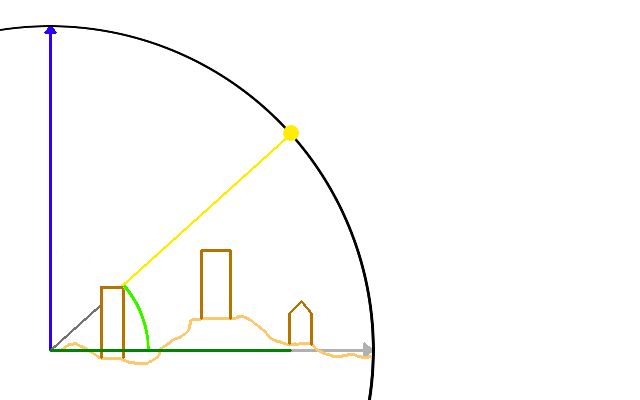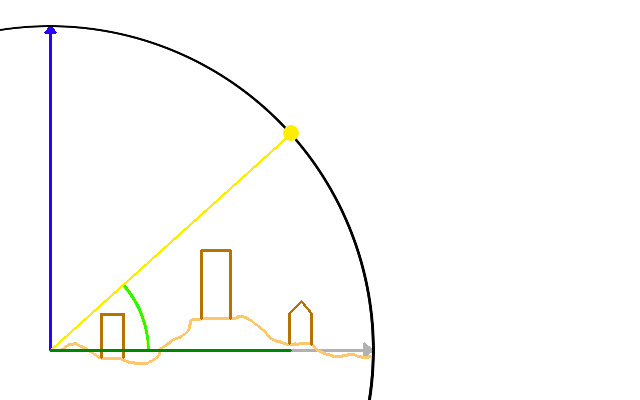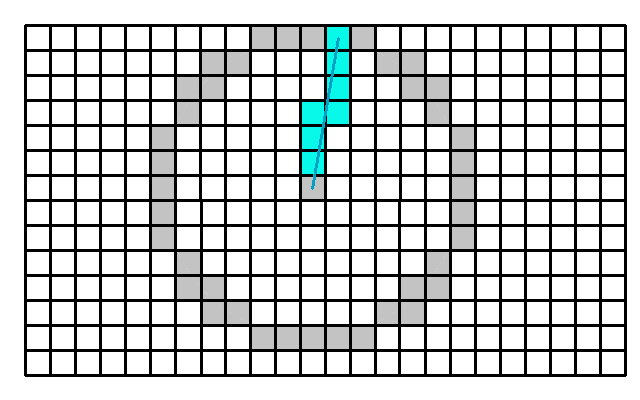Shade calculation model (Heat Overlay)
Whether a cell is in the shade or not is an important factor in the Heat Overlay. The notion that a cell is shaded or not determined which PET function is used; PETsun or PETshade, night. In the model described by the DPRA Heat stress report, cells can be shaded by buildings, terrain and foliage.
The shade is dependent on the location of the sun. This in turn is dependent on the date and the time of day and the world location of the project.
Since each timeframe result of a Heat Overlay is related to a particular date and time of day, each time frame will have a related sun altitude and sun azimuth angle. These angles are calculated automatically based on the world location of your project and the date of the timeframe.
Once the sun angles and the building, terrain and foliage height are known, whether the cell is shaded or not is computed as follows:
- For each cell:
- Travel away from the cell in the direction of the sun azimuth angle.
- For each new cell reached, calculate the height of the sun ray based on the altitude angle.
- Compare the sun ray altitude with the maximum height (terrain, building and foliage) at the cell.
- In case this height is higher, the cell is shaded and we can stop.
- Else continue to the next cell.
See also







